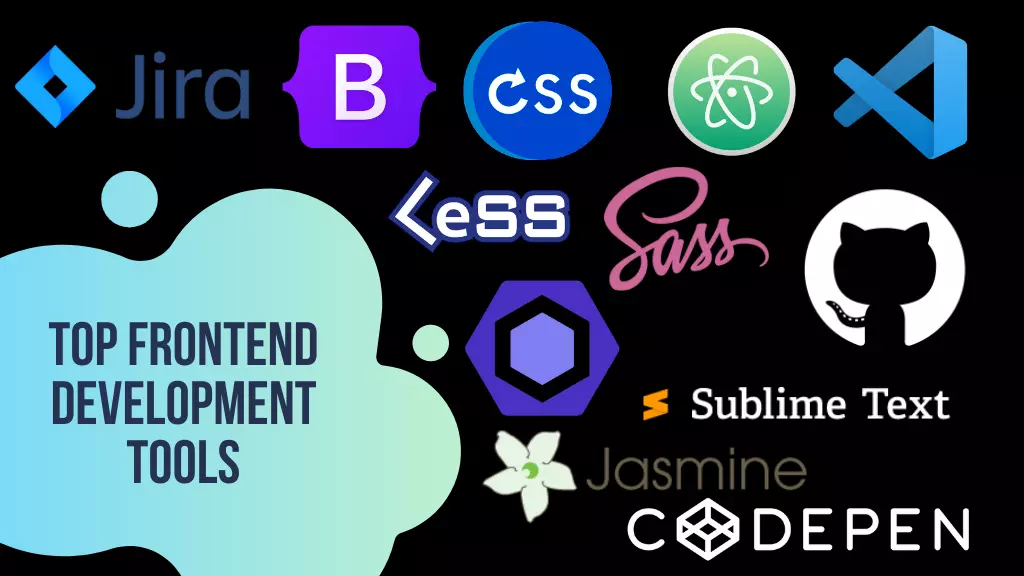AZG News Hub
Your go-to source for the latest news and informative articles.
Front-End Finesse: Crafting Websites That Wow
Unleash your creativity with Front-End Finesse! Discover tips and tricks to craft stunning websites that leave a lasting impression.
10 Essential Tools Every Front-End Developer Should Know
As a front-end developer, mastering the right tools is crucial for enhancing productivity and ensuring high-quality deliverables. Here are 10 essential tools that every developer should know:
- Visual Studio Code: This lightweight yet powerful code editor offers excellent support for JavaScript, CSS, and HTML, including extensions that help streamline your development process.
- Git: Version control is vital; tools like Git allow developers to track changes and collaborate effectively with teams. For more insights, check Git's Official Website.
- Chrome DevTools: Built directly into the Chrome browser, these tools enable developers to debug and optimize their web applications seamlessly.
- Figma: A design tool that facilitates collaboration between developers and designers, making it easier to implement designs into functional elements.
In addition to the aforementioned tools, here are more essentials that can elevate your front-end development game:
- Webpack: This module bundler helps optimize your assets and code, providing a smoother experience in web applications.
- Sass: A preprocessor scripting language that extends CSS with variables and mixins, making your stylesheets more maintainable.
- React: A powerful library for building user interfaces, allowing developers to create dynamic single-page applications with ease. Learn more at React's Documentation.
- Bootstrap: A responsive framework that simplifies the development of mobile-first websites.
- Postman: A collaborative platform for API development that helps developers test and document their APIs effortlessly.

How to Create Stunning Visuals with CSS Flexbox and Grid
Creating stunning visuals for your website is easier than ever with CSS Flexbox and Grid. These powerful layout models allow you to arrange elements on your webpage in a flexible, responsive manner that adapts to different screen sizes. Flexbox is ideal for one-dimensional layouts, making it perfect for styling menus or aligning items in a row or column. On the other hand, CSS Grid excels at two-dimensional layouts, enabling you to create complex grid systems with minimal effort. To get started, familiarize yourself with the basics of these technologies by visiting resources like the CSS-Tricks CSS Grid Guide and the Flexbox Guide.
To create stunning visuals, begin by defining your layout structure using either Flexbox or Grid depending on your needs. For example, you can use a grid layout to create a responsive image gallery by defining your grid container with display: grid; and then specifying rows and columns with grid-template-rows and grid-template-columns. Utilize properties such as justify-items and align-items to control the alignment of your elements within the grid. Additionally, with Flexbox, you can easily center items using justify-content: center; and align-items: center;. For deeper insights, check out this great MDN Web Docs on Flexbox and MDN Web Docs on Grid.
What Are the Key Principles of User-Centered Design in Web Development?
User-Centered Design (UCD) is a fundamental principle in web development that places the needs, wants, and limitations of users at the forefront of the design process. This approach involves understanding users through methods such as interviews, surveys, and usability testing. By engaging with users early and often, developers can create more intuitive interfaces that enhance user satisfaction. Nielsen Norman Group emphasizes that UCD ensures that the final product effectively addresses user needs and provides a better overall experience.
One of the key principles of UCD is the iterative design process, which consists of repeated cycles of design, prototyping, and evaluation. This method allows designers to refine their ideas based on real user feedback. By utilizing tools like wireframes and interactive prototypes, teams can identify usability issues before the final product is launched. Furthermore, advocating for accessibility and inclusivity is crucial; ensuring that websites are usable for people with disabilities is a vital component of a user-centered approach. For more insights, check out W3C's Web Accessibility Guidelines.